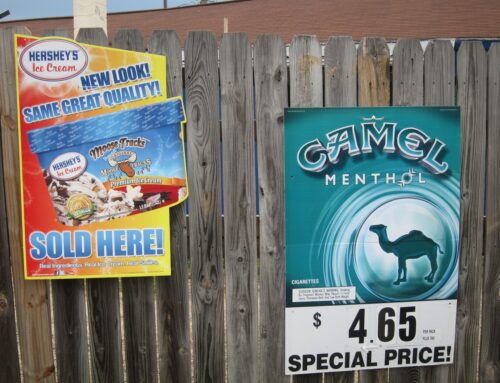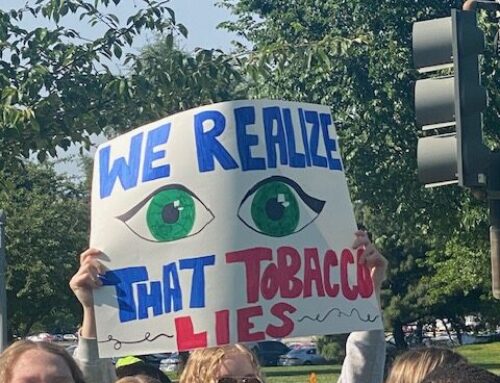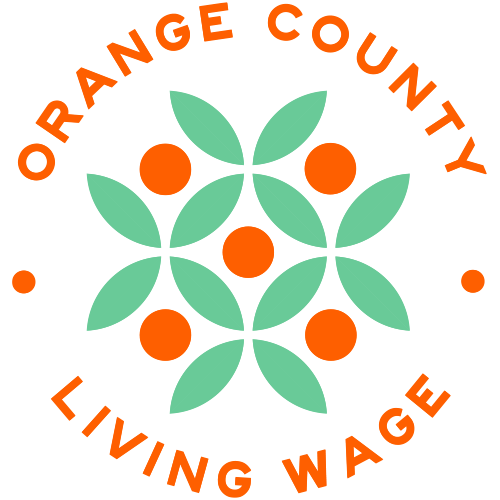Dear Majority Leader Schumer, Minority Leader McConnell, Speaker Pelosi and Minority Leader McCarthy:
We write to urge you to respond to a new and growing threat to our nation’s youth: e-cigarette manufacturers’ use of synthetic nicotine to evade Food and Drug Administration (FDA) oversight. E-cigarette manufacturers, including the e-cigarette brand that is most popular with youth, are switching from using tobacco-derived nicotine in their products to synthetic nicotine in order to circumvent tobacco product regulations and to keep flavored e-cigarettes that are attracting and addicting youth on the market. We urge you to quickly address this serious public health situation by enacting legislation at the earliest possible opportunity that enables FDA’s Center for Tobacco Products to regulate synthetic nicotine products.
The Family Smoking Prevention and Tobacco Control Act gave FDA the authority to oversee tobacco products and defined a “tobacco product” as a product made or derived from tobacco. Manufacturers of synthetic nicotine and e-cigarettes that contain synthetic nicotine have suggested that their products are not subject to FDA regulation because synthetic nicotine is not derived from tobacco and, therefore, does not fall within the definition of “tobacco product.” FDA has acknowledged that an e-cigarette made with synthetic nicotine may fall outside of the definition of tobacco product and has indicated it intends to make these determinations on a case-by-case basis.
The repercussions of this situation have become alarming over the past year. In 2020, Puff Bar, a disposable e-cigarette product marketed with kid-appealing flavors, withdrew from the market after receiving a warning letter from FDA for being out of compliance with tobacco product requirements. But in 2021, it announced that it was re-entering the market as a synthetic nicotine product in the same kid-appealing flavors. This switch to synthetic nicotine was a blatant attempt to avoid FDA oversight and, so far, has been successful. Puff Bar e-cigarettes continue to be sold, and Puff Bar is the most popular e-cigarette brand among youth. According to the 2021 National Youth Tobacco Survey, 26.8 percent of middle and high school e-cigarette users report Puff Bar as their usual brand.
Other e-cigarette manufacturers are pursuing this same tactic. After FDA completed its premarket reviews of some e-cigarettes, including those with flavors that appeal to youth, and found that they did not meet statutory requirements for remaining on the market, there were reports that manufacturers were discussing reformulating their products with synthetic nicotine in order to try to stay on the market. If left unaddressed, there is every reason to expect manufacturers of thousands of other e-cigarettes to switch to synthetic nicotine to try to evade the public health protections that Congress intended when it required new tobacco products to undergo a premarket review by FDA. We are also likely to see growth in the number of other tobacco products using synthetic nicotine, such as nicotine pouch products.
Youth e-cigarette use is a serious public health problem. The 2021 Monitoring the Future survey, released in December, found that 19.6 percent of high school seniors reported that they vaped nicotine in the past month. While this is a decline since youth e-cigarette use peaked in 2019, it is nearly the same level as 2018 when the U.S. Surgeon General, FDA, and other public health authorities declared youth e-cigarette use to be a public health epidemic. Nicotine is addictive, whether it is derived from tobacco or made synthetically. The continued availability of unregulated synthetic nicotine products will make reducing high levels of youth e-cigarette use more difficult. A recent article in the New England Journal of Medicine warned that synthetic nicotine products “may threaten ongoing public health efforts to reduce e-cigarette use among adolescents and young adults” and argued that there “is an urgent need for the FDA to assert its regulatory authority over these products.”
Time is of the essence. Inaction will result in more manufacturers switching to synthetic nicotine, allow flavored e-cigarettes that have helped fuel the youth e-cigarette epidemic to remain on the market, and undercut efforts to protect kids from nicotine addiction and tobacco use. Further delay on synthetic nicotine will also enable other products made with synthetic nicotine to enter the market and evade FDA regulation. We urge you to prioritize the development of bipartisan, bicameral legislation that would give FDA’s Center for Tobacco Products the authority to regulate synthetic nicotine products as tobacco products and to quickly enact it into law.
Download the pdf:
Coalition Letter on Synthetic Nicotine 3.7.22






